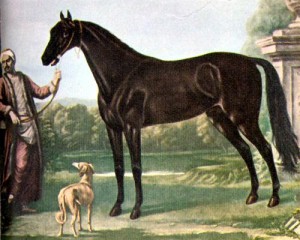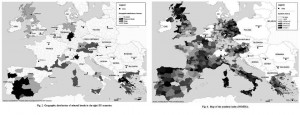- Norway protects eels.
- 3d interactive training materials for beekeeping and sorghum cultivation.
- More on the Hawaiian GM taro story.
Chicks on film
Through interviews and reenactments, The Natural History of the Chicken investigates the role of the chicken in American life and tells several remarkable stories.
Via.
Nibbles: Bats and bananas, Extension, Russian animal harvests, Rice improvement, Sacred groves
Bad news from Tehran
In addition to everything else, it seems that the Turkman horse is under threat of extinction. 1 The problem seems to be interbreeding with Throughbreds, and owners unwilling to risk pure-bred Turkmen horses, which are expensive, in races where there is a risk of injury and prize money is low. According to one expert:
Iranian horses have unique features such as smartness, nobility, special physical conditions and high endurance level which cannot be observed in any of the imported horses.
Among the proposals to save the Turkmen horse are a genebank (not sure how that would work) and a breed register, which would probably require DNA testing for individuals.

One thing puzzles me. In the very restricted genetic bottleneck that resulted in the English Thoroughbred is a fine animal known as The Byerly Turk. Was it really a Turk? Wikipedia thinks not. More to the point, one can only be grateful that the English did not decry all that messy genetic pollution that gave rise to the English Thoroughbred.
Livestock landraces and marginality in Europe
Visually, by comparing the map of INDEX2 (Fig. 6) [right] with the one of the distribution of breeds (Fig. 2) [left], it can be seen that the studied breeds seem to be consistently located in regions defined as marginal by the indices.
Well, maybe. Click on the image to see better. But it seems a stretch to me, and the more rigorous logit analysis that the authors subject the data to isn’t exactly overwhelming. If I understand it correctly, the best that a combination of various proxies for marginality can do in predicting the presence of local sheep and goat breeds is 19%. And that’s with breed distribution data which seems to be biased towards marginal areas anyway.
Local sheep and goat breeds are generally argued to be remarkably well adapted to marginal rural areas.
That’s certainly a dominant meta-narrative, and not just for livestock, for agrobiodiversity as a whole. I may even believe it. But not a huge amount of evidence for it here.
